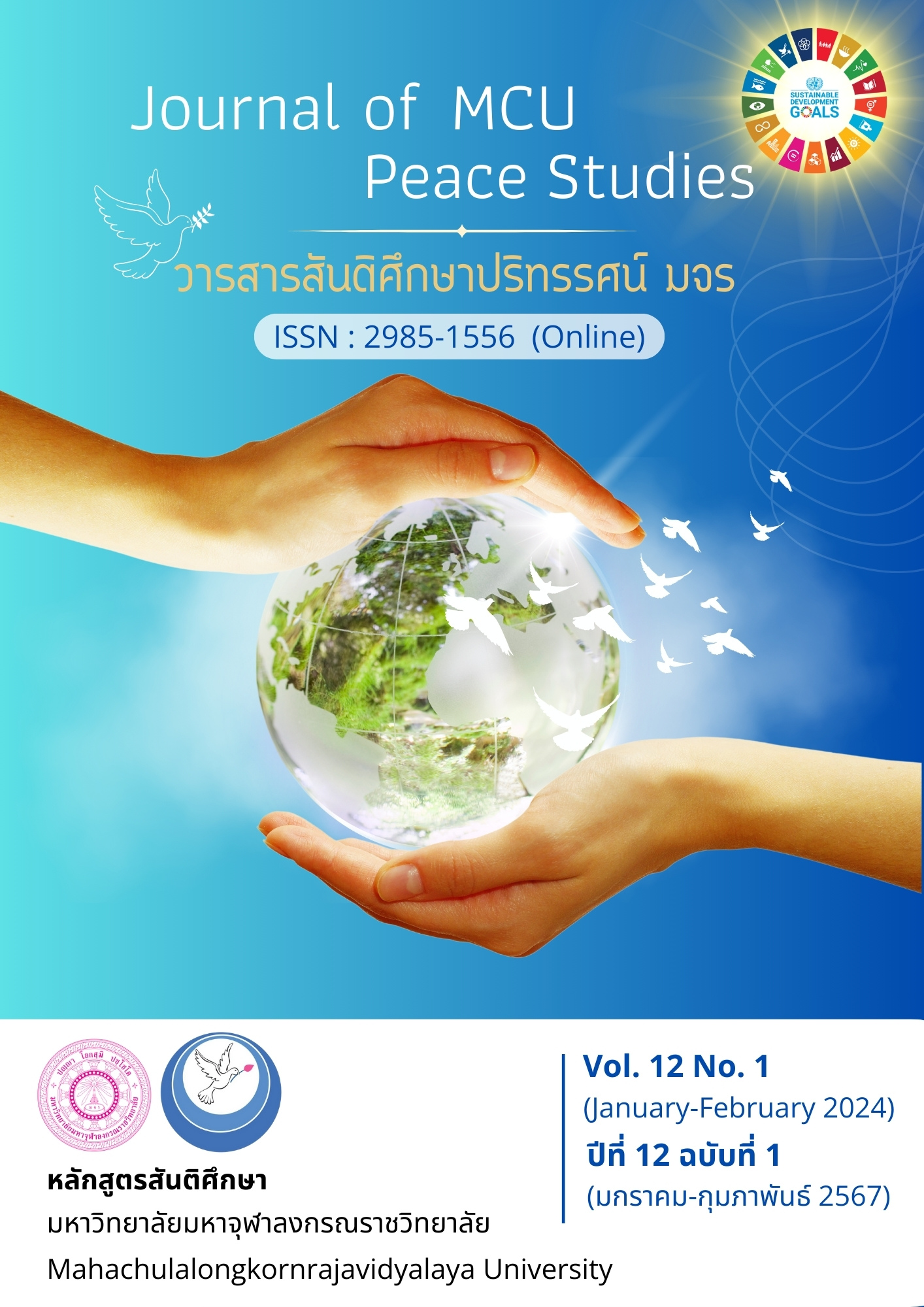The Development of a Self-assessment System for Teaching to Enhance the Quality of Vocational Students
Main Article Content
Abstract
The research article had two objectives: 1) to investigate problems with a self-assessment system for teaching to enhance the quality of vocational students; and 2) to develop and evaluate the propriety of a self-assessment system for teaching to enhance the quality of vocational students. A sample group of 1,767 persons was used to investigate the problems and the need to develop a self-assessment system for teaching. This group consisted of the deputy director for academic affairs, department heads, and teachers from government schools under the Office of the Vocational Education Commission. The target group for evaluating the propriety of a self-assessment system for teaching included supervisors, teachers from the Office of the Vocational Education Commission, and academics from the Office of the Higher Education Commission, for a total of 9 persons. The data collected were analyzed using mean, standard deviation, frequency, and the Priority Needs Index (PNI).
From the study, the following results are found:
1) The problems with a self-assessment system and the need to develop a self-assessment system for teaching in order to enhance the quality of vocational students are at the highest level. According to a sample group, the PNI of problems ranges from high to low as follows: Need for development, issues requiring the development of a self-assessment system for teaching, and problems with a self-assessment system for teaching. Regarding the need to develop a self-assessment system for teaching, after the study with two relevant groups, it is found that the quality of teaching preparation has the highest PNI value (=0.41).
2) A self-assessment system for teaching includes the following components: (1) Evaluating the quality of teaching preparation, which comprises 1.1) analyzing the course curriculum, 1.2) analyzing the learning units, 1.3) identifying behavioral objectives, 1.4) creating worksheets, 1.5) designing and constructing teaching media, 1.6) creating exercises and tests, and 1.7) planning and writing teaching plan theory; (2) Evaluating the teaching quality, which comprises 2.1) teaching techniques, 2.2) teaching and learning processes, and 2.3) creating the atmosphere that encourages learning; (3) Improving the teaching quality, which comprises 3.1) improving learning management plan, and 3.2) improving teaching methods.
Article Details

This work is licensed under a Creative Commons Attribution-NonCommercial-NoDerivatives 4.0 International License.
Views and opinions expressed in the articles published by The Journal of MCU Peace Studies, are of responsibility by such authors but not the editors and do not necessarily reflect those of the editors.
References
Boud, D. (2003). Enhancing Learning Through Self Assessment. New York: Routledge Falmer.
Cantu, D. V. (2015). Applying Reflection and Self-assessement Practices to Integrative STEM Lessons: A Design Based Research Study to Develop an Instrument for Elementary Practitioners. (Doctoral Dissertation). Old Dominion University. USA.
Fletcher, & Baldry. (2000). Multi-source Feedback Systems: A Research Perspective. In International Review of Industrial and Organizational Psychology Vol. 14. (C. L. Cooper & I. T. Robertson, Eds.). New York: John Wiley & Sons.
Johnson, A. P. (2000). It’s Time for Madeline Hunter to Go: A New Look at Lesson Plan Design. Action in Teacher Education, 22(1), 72-78.
Kiddee, K. (2004). The Development of an Assessment Model for Teaching and Learning Management at Focusing on the Students is Important. Bangkok: Chulalongkorn University.
Kijpreedabrisuth, B. (1992). Measurement and Evaluation of Teaching and Learning. (2nd ed.). Bangkok: B & B Publishing.
Kyriakides, L., & Campbell, R. J. (2004). School Self-evaluation and School Improvement: A Critique of Values and Procedures. Studies in Educational Evaluation, 30(1), 23-36.
Noppakhun, J. (2018). Reflective Thinking Through Sketchbook Journals of Teacher Students of Early Childhood Education of Suan Dusit University. Suan Dusit Graduate School Academic Journal, 14(3), 307-322.
Ruengtragul, A., & Damrongpanit, S. (2008). Self-assessment for Development in Fulfilling Knowledge: Knowing, Thinking, Doing. Virtue Center. (N.P.)
Sridhrungsri, P. (2009). Education in Thailand in the Future 10-20 Years. Retrieved January 3, 2023, from https://www.dpu.ac.th/ces/upload/km/1406790542.pdf
Thanachawengsakul, N., & Jeerangsuwan, N. (2018). Instructional Model of MIAP on Cloud Computing Technology of the Undergraduate Students in Order to Promote 21st Century Learning Skill. Journal of Education Naresuan University, 20(4), 58-69.

